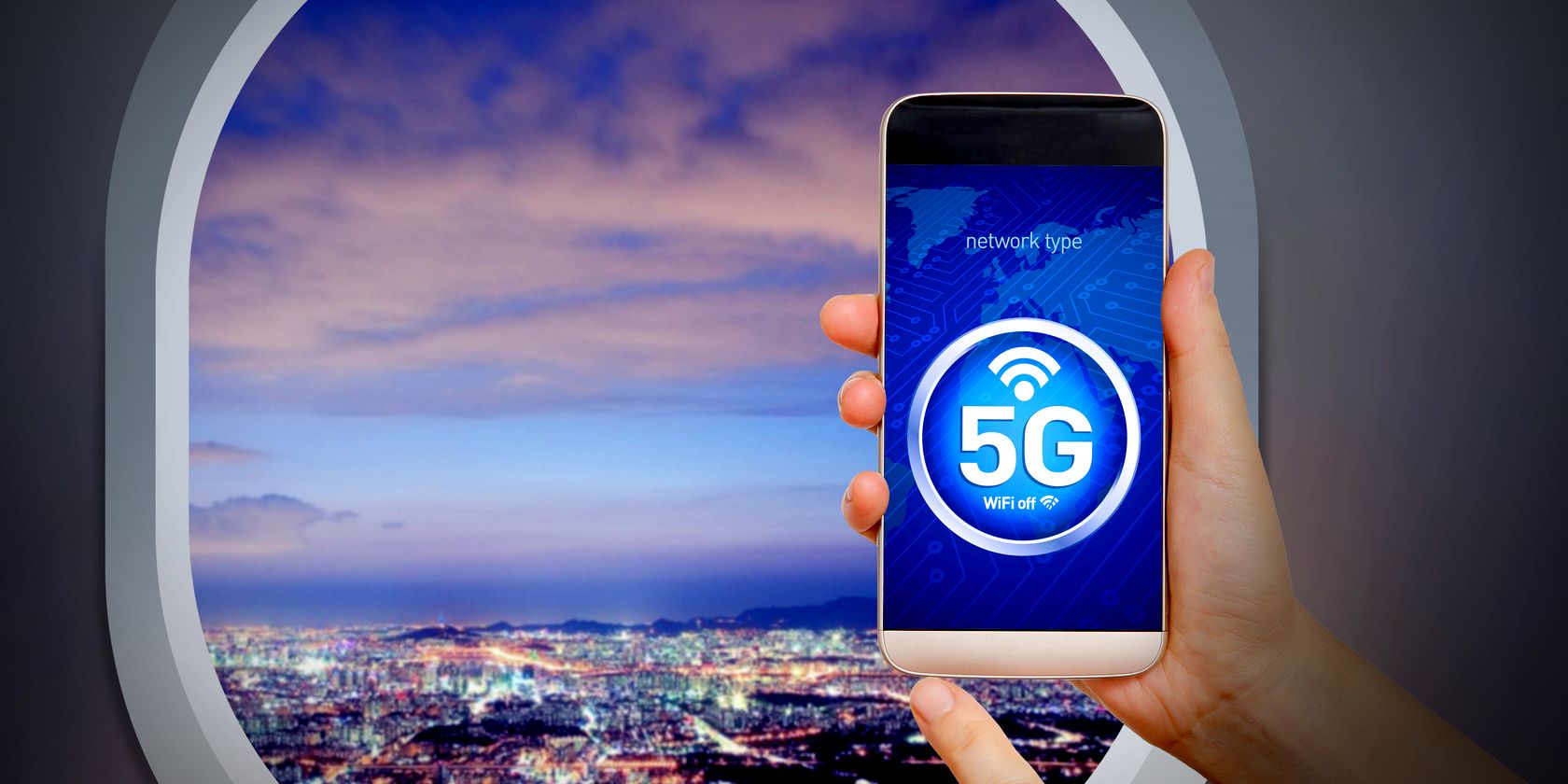In late 2021, US airlines and aircraft manufacturers Boeing and Airbus claimed the rollout of 5G wireless would cause safety risks for airplanes. The aviation industry is concerned that the deployment of C-Band spectrum 5G wireless will interfere with aircraft electronics, potentially causing issues in and around airports using the technology.
So, how exactly will 5G interfere with aircraft, and what exactly is being done about it? Let's find out.
First, What Is 5G Wireless?
Since 1980, mobile phones have evolved every ten years from 1G to 2G, 2G to 3G, then 3G to 4G, and now 5G, which started rolling out across the United States in 2020. The G simply stands for generation.
A cell phone converts voice into a radio wave that travels through the air to a nearby cell tower, sending that radio wave to the recipient phone through a network of cell towers. Then, the recipient phone converts the incoming radio wave back into voice, enabling a conversation to happen.
5G wireless means that cell phones will begin transmitting and receiving radio waves that provide superior bandwidth of up to 20Gbps, superior reliability, and negligible latency. This will allow new immersive experiences, such as the metaverse, which are currently not well supported by 4G wireless.
Indeed, Facebook renamed itself Meta and is pivoting to the metaverse in anticipation of the widespread availability of 5G around the world.
Is 5G Safe for Airplanes in the United States?
The Federal Aviation Administration (FAA) and the aviation industry both warn that 5G cell towers that transmit on the C-band spectrum appear to have significant potential to interfere with radar altimeters. This will make the radar altimeters inaccurate or non-functional.
Radar altimeters tell pilots how high above the ground the aircraft is and are critical in poor weather. They transmit on frequencies between 4.2GHz and 4.4GHz, which is uncomfortably close to the 3.7GHz to 3.98GHz frequency range of 5G wireless transmitters.
A Radio Technical Commission for Aeronautics (RTCA) report claims that 5G cell towers, many of which are located close to major airports, will cause radar altimeters to be inaccurate or to fail outright, and lead to "the possibility of catastrophic failures leading to multiple fatalities, in the absence of appropriate mitigations."
Wireless operators have disputed this for years, claiming that their 5G transmitters are perfectly safe. However, they relented on November 4, 2021, and agreed to delay the nationwide activation of 5G transmitters until January 5, 2022. They again agreed to delay activation to January 19, at the request of the White House, as all concerned parties work together to implement acceptable solutions to mitigate the safety concerns.
In an emailed statement, AT&T said:
At Secretary Buttigieg's request, we have voluntarily agreed to one additional two-week delay of our deployment of C-Band 5G services. . . We also remain committed to the six-month protection zone mitigations we outlined in our letter. We know aviation safety and 5G can co-exist and we are confident further collaboration and technical assessment will allay any issues.
What About the Rest of the World?
3G was deployed in the early 2000s and needed 12 years to reach a billion users worldwide. 4G reached a billion users four years after deployment in 2010. 5G is expected to reach a billion users much faster, probably in 3.5 years or less (since its launch in 2019). It is currently deployed in 133 countries in some form. The leading countries are South Korea, the US, and China, with Europe catching up rapidly.
Interestingly, the impact of 5G on aviation safety appears to be a concern only in the United States. On December 17, 2021, the European Union Aviation Safety Agency (EASA) said [PDF]: "No risk of unsafe interference has been identified in Europe." South Korea has had 5G transmitters near airports since 2019, and there have been no reports of problems. The same applies to China, which is actually working to roll out in-flight 5G internet.
Indeed, US airlines fly to these countries daily while carrying thousands of US citizens and land in their airports without incident. So why do US aircraft seem to be in danger from 5G only when flying into America's airports?
Well, the answer is actually rather straightforward. Europe and Asia do not deploy the same 5G spectrum as the United States. Most European and Asian countries are on the 3.3GHz to 3.8GHz spectrum, while the United States uses the 3.3GHz to 4.2GHz spectrum. Europe and Asia are on a spectrum and power level lower than what is authorized in the United States and much further away from the frequencies used by airplane radar altimeters.
Therefore, the United States potentially faces risks to its aviation industry that the other countries do not.
5G Is Unstoppable, But Safety First
4G brought us amazing things, such as video streaming, social media, photo sharing, e-commerce, and so many applications that we now say, "there's an app for that," to every problem, and indeed there is.
5G networks will handle 1 million devices per square kilometer, compared to the 100,000 that 4G can handle. 5G will multiply what 4G can do by ten times in terms of speeds, bandwidths, and latency. This will transform the world.
5G will connect everything to everything, from your car to your fridge to your phone to, well, everything. So, for example, a surgeon in India will be able to perform open-heart surgery on a patient in California in real-time using robots.
However, while 5G offers limitless possibilities, human life is more important. It is, therefore, encouraging that the US government, the aviation industry, and wireless operators are working together to deploy 5G safely. Whatever mitigation measures they agree on will set the gold standard for the world to follow. Most importantly, this 5G rollout pause will enable a unified approach to aviation safety for when 5G is as universally available as 4G.



